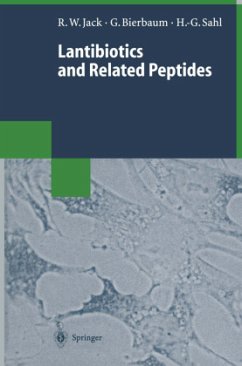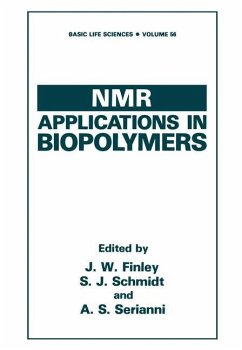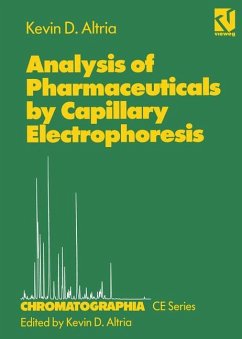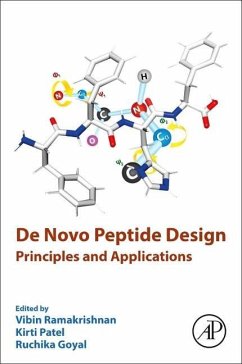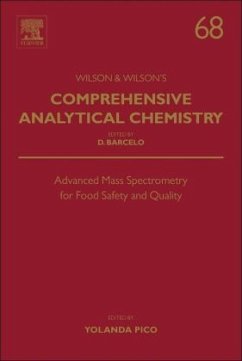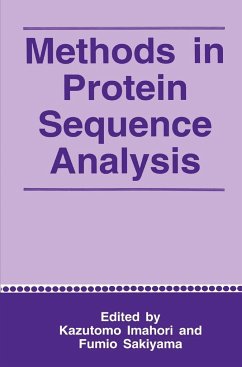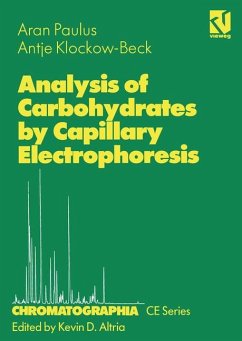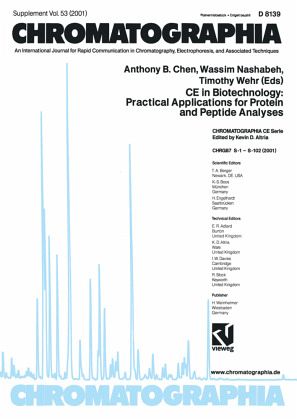
CE in Biotechnology: Practical Applications for Protein and Peptide Analyses

PAYBACK Punkte
19 °P sammeln!
The continuing development of capillary electrophoresis (CE) is evident by the increasing number of journal articles, text books and symposia devoted to CE. This monograph is part of a continuing series covering individual areas of CE.The Symposium 'CE in Biotechnology: Practical Applications for Protein Analysis' was held in San Francisco, California, USA on August 18, 1999. The symposium highlighted practical applications, including methods which had obtained regulatory approval for the routine analysis of marketed recombinant protein pharmaceuticals. This meeting demonstrated that CE has fo...
The continuing development of capillary electrophoresis (CE) is evident by the increasing number of journal articles, text books and symposia devoted to CE. This monograph is part of a continuing series covering individual areas of CE.
The Symposium 'CE in Biotechnology: Practical Applications for Protein Analysis' was held in San Francisco, California, USA on August 18, 1999. The symposium highlighted practical applications, including methods which had obtained regulatory approval for the routine analysis of marketed recombinant protein pharmaceuticals. This meeting demonstrated that CE has found a niche in the routine analysis of proteins and peptides in an industrial setting. The editors of this monograph, along with the series editor (Kevin Altria) were of the opinion that the proceedings of that meeting could provide the basis for theoretical and practical issues related to the analysis of therapeutic proteins and peptides by CE. This publication therefore consists of some of the practical applications that were presented by scientists from leading biotechnology companies. Several comprehensive review chapters, including 'CE in the development of recombinant protein biopharmaceuticals', 'Selection of buffers in CZE: application to peptide and protein analysis' and 'Recent advances in cIEF' are included as supplemental information.
This publication should be read by those seeking to develop and/or validate methods to be used for routine analysis of proteins and peptides for drug development and quality control.
The Symposium 'CE in Biotechnology: Practical Applications for Protein Analysis' was held in San Francisco, California, USA on August 18, 1999. The symposium highlighted practical applications, including methods which had obtained regulatory approval for the routine analysis of marketed recombinant protein pharmaceuticals. This meeting demonstrated that CE has found a niche in the routine analysis of proteins and peptides in an industrial setting. The editors of this monograph, along with the series editor (Kevin Altria) were of the opinion that the proceedings of that meeting could provide the basis for theoretical and practical issues related to the analysis of therapeutic proteins and peptides by CE. This publication therefore consists of some of the practical applications that were presented by scientists from leading biotechnology companies. Several comprehensive review chapters, including 'CE in the development of recombinant protein biopharmaceuticals', 'Selection of buffers in CZE: application to peptide and protein analysis' and 'Recent advances in cIEF' are included as supplemental information.
This publication should be read by those seeking to develop and/or validate methods to be used for routine analysis of proteins and peptides for drug development and quality control.





